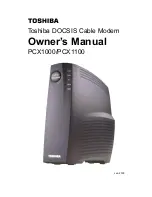
Weidmuller Wireless Ethernet Modem & Device Server WI-MOD-E-G/A User Manual
Rev.
2.16
www.weidmuller.com
14
The net gain of the antenna/cable configuration is determined by adding the antenna gain and the cable loss.
For example, if using the WI-MOD-E-G a 10dBi antenna (7.8dBd) with 10 meters of Cellfoil (-5.6dB) has a net gain of
2.2dB (7.8dB – 5.6dB).
Installation tips
Connections between the antenna and coaxial cable should be carefully taped to
prevent ingress of moisture. Moisture ingress in the coaxial cable is a common
cause for problems with radio systems, as it greatly increases the radio losses. We
recommend that the connection be taped, firstly with a layer of PVC Tape, then
with a vulcanizing tape such as “3M 23 tape”, and finally with another layer of
PVC UV Stabilized insulating tape. The first layer of tape allows the joint to be
easily inspected when trouble shooting as the vulcanizing seal can be easily
removed.
Where antennas are mounted on elevated masts, the masts should be effectively
earthed to avoid lightning surges. For high lightning risk areas, surge suppression
devices between the module and the antenna are recommended. If the antenna is
not already shielded from lightning strike by an adjacent earthed structure, a
lightning rod may be installed above the antenna to provide shielding.
Dipole and Collinear antennas
A dipole or collinear antenna transmits the same amount of radio power
in all directions - as such that are easy to install and use. The dipole
antenna with integral 15 ft (5m) cable does not require any additional
coaxial cable; however a cable must be used with the collinear antennas.
Collinear and dipole antennas should be mounted vertically, preferably 1
wavelength away (see drawing below for distances) from a wall or mast
and at least 3ft (1m) from the radio module to obtain maximum range.
Directional antennas.
Directional antennas can be
a Yagi antenna with a main beam and orthogonal elements, or
a directional radome, which is cylindrical in shape, or
a parabolic antenna.
A directional antenna provides high gain in the forward direction, but lower gain in other
directions. This may be used to compensate for coaxial cable loss for installations with
marginal radio path.
Yagi antennas should be installed with the main beam horizontal, pointing in the forward
direction. If the Yagi is transmitting to a vertically mounted omni directional antenna, then the
Yagi elements should be vertical. If the Yagi is transmitting to another Yagi, then the elements at
each end of the wireless link need to in the same plane (horizontal or vertical).
Directional radomes should be installed with the central beam horizontal and must be pointed
exactly in the direction of transmission to benefit from the gain of the antenna. Parabolic
Figure 1 - Vulcanising Tape
Figure 2 - Dipole Antenna
Figure 3 - Collinear
Antenna















































